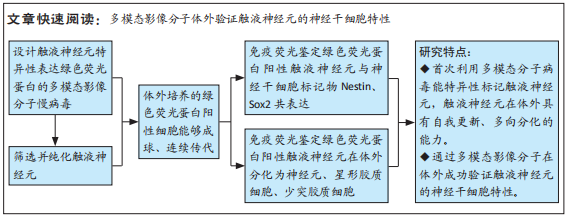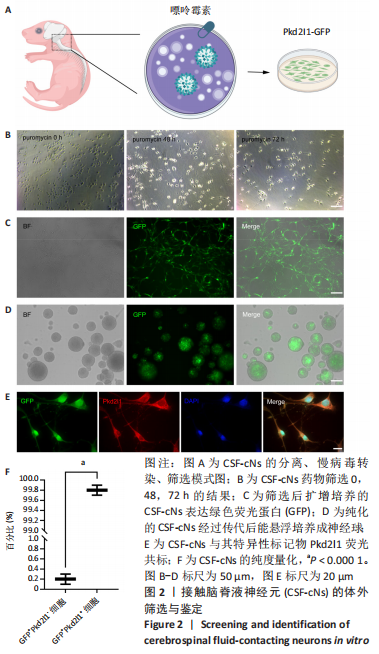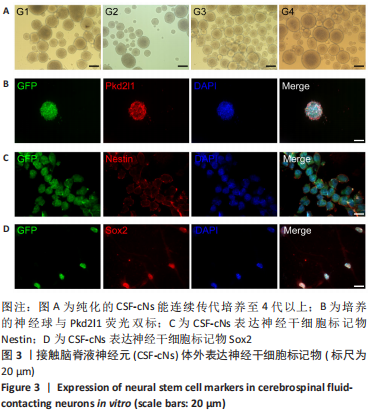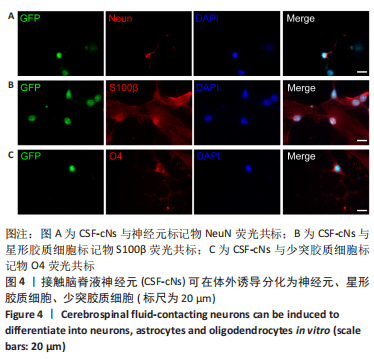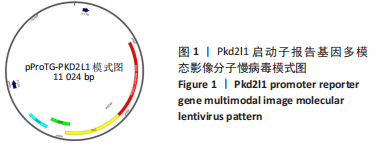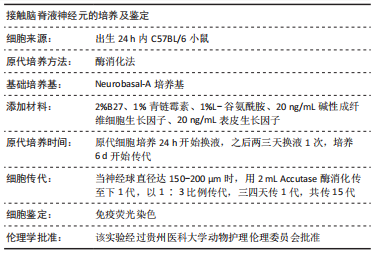[1] LU P, WANG Y, GRAHAM L, et al. Long-distance growth and connectivity of neural stem cells after severe spinal cord injury. Cell. 2012;150(6):1264-1273.
[2] CURTIS E, MARTIN JR, GABEL B, et al. A First-in-Human, Phase I Study of Neural Stem Cell Transplantation for Chronic Spinal Cord Injury. Cell Stem Cell. 2018;22(6):941-950.e6.
[3] ROSENZWEIG ES, BROCK JH, LU P, et al. Restorative effects of human neural stem cell grafts on the primate spinal cord. Nat Med. 2018;24(4):484-490.
[4] LLORENS-BOBADILLA E, CHELL JM, LE MERRE P, et al. A latent lineage potential in resident neural stem cells enables spinal cord repair. Science. 2020;370(6512):eabb8795.
[5] SHAH PT, STRATTON JA, STYKEL MG, et al. Single-Cell Transcriptomics and Fate Mapping of Ependymal Cells Reveals an Absence of Neural Stem Cell Function. Cell. 2018;173(4):1045-1057.e9.
[6] VIGH B, VIGH-TEICHMANN I. Comparative ultrastructure of the cerebrospinal fluid-contacting neurons. Int Rev Cytol. 1973;35:189-251.
[7] HE YQ, SHI XX, CHEN L, et al. Cerebrospinal fluid-contacting neurons affect the expression of endogenous neural progenitor cells and the recovery of neural function after spinal cord injury. Int J Neurosci. 2021;131(6):615-624.
[8] WANG S, HE Y, ZHANG H, et al. The Neural Stem Cell Properties of PKD2L1+ Cerebrospinal Fluid-Contacting Neurons in vitro. Front Cell Neurosci. 2021;15:630882.
[9] CAO L, HUANG MZ, ZHANG Q, et al. The neural stem cell properties of Pkd2l1+ cerebrospinal fluid-contacting neurons in vivo. Front Cell Neurosci. 2022;16:992520.
[10] PETRACCA YL, SARTORETTI MM, DI BELLA DJ, et al. The late and dual origin of cerebrospinal fluid-contacting neurons in the mouse spinal cord. Development. 2016;143(5):880-891.
[11] TONELLI GOMBALOVÁ Z, KOŠUTH J, ALEXOVIČ MATIAŠOVÁ A, et al. Majority of cerebrospinal fluid-contacting neurons in the spinal cord of C57Bl/6N mice is present in ectopic position unlike in other studied experimental mice strains and mammalian species. J Comp Neurol. 2020;528(15):2523-2550.
[12] WEISSLEDER R. Molecular imaging: exploring the next frontier. Radiology. 1999;212(3):609-614.
[13] CHEN X, WERNER RA, JAVADI MS, et al. Radionuclide imaging of neurohormonal system of the heart. Theranostics. 2015;5(6):545-558.
[14] EDMUNDSON M, THANH NT, SONG B. Nanoparticles based stem cell tracking in regenerative medicine. Theranostics. 2013;3(8):573-582.
[15] BREWER GJ, TORRICELLI JR. Isolation and culture of adult neurons and neurospheres. Nat Protoc. 2007;2(6):1490-1498.
[16] HOMAYOUNI MOGHADAM F, SADEGHI-ZADEH M, ALIZADEH-SHOORJESTAN B, et al. Isolation and Culture of Embryonic Mouse Neural Stem Cells. J Vis Exp. 2018;(141). doi: 10.3791/58874.
[17] REYNOLDS BA, WEISS S. Generation of neurons and astrocytes from isolated cells of the adult mammalian central nervous system. Science. 1992;255(5052):1707-1710.
[18] LIU Y, TAN B, WANG L, et al. Endogenous neural stem cells in central canal of adult rats acquired limited ability to differentiate into neurons following mild spinal cord injury. Int J Clin Exp Pathol. 2015;8(4):3835-3842.
[19] GRÉGOIRE CA, GOLDENSTEIN BL, FLORIDDIA EM, et al. Endogenous neural stem cell responses to stroke and spinal cord injury. Glia. 2015;63(8):1469-1482.
[20] CHAKER Z, CODEGA P, DOETSCH F. A mosaic world: puzzles revealed by adult neural stem cell heterogeneity. Wiley Interdiscip Rev Dev Biol. 2016;5(6):640-658.
[21] LI X, FLORIDDIA EM, TOSKAS K, et al. Regenerative Potential of Ependymal Cells for Spinal Cord Injuries Over Time. EBioMedicine. 2016;13:55-65.
[22] SEABERG RM, VAN DER KOOY D. Adult rodent neurogenic regions: the ventricular subependyma contains neural stem cells, but the dentate gyrus contains restricted progenitors. J Neurosci. 2002;22(5):1784-1793.
[23] DOETSCH F, CAILLÉ I, LIM DA, et al. Subventricular zone astrocytes are neural stem cells in the adult mammalian brain. Cell. 1999;97(6):703-716.
[24] MARICHAL N, REALI C, TRUJILLO-CENÓZ O, et al. Spinal Cord Stem Cells In Their Microenvironment: The Ependyma as a Stem Cell Niche. Adv Exp Med Biol. 2017;1041:55-79.
[25] STOECKEL ME, UHL-BRONNER S, HUGEL S, et al. Cerebrospinal fluid-contacting neurons in the rat spinal cord, a gamma-aminobutyric acidergic system expressing the P2X2 subunit of purinergic receptors, PSA-NCAM, and GAP-43 immunoreactivities: light and electron microscopic study. J Comp Neurol. 2003;457(2):159-174.
[26] MARICHAL N, GARCÍA G, RADMILOVICH M, et al. Enigmatic central canal contacting cells: immature neurons in “standby mode”? J Neurosci. 2009;29(32):10010-10024.
[27] SABOURIN JC, ACKEMA KB, OHAYON D, et al. A mesenchymal-like ZEB1(+) niche harbors dorsal radial glial fibrillary acidic protein-positive stem cells in the spinal cord. Stem Cells. 2009;27(11):2722-2733.
[28] 杨翠红,宋娜玲,孙忠利,等.多模态成像在干细胞研究中的应用进展[J].中华核医学与分子影像杂志,2015,35(5):407-409.
[29] BABU H, CHEUNG G, KETTENMANN H, et al. Enriched monolayer precursor cell cultures from micro-dissected adult mouse dentate gyrus yield functional granule cell-like neurons. PLoS One. 2007;2(4):e388.
[30] BELENGUER G, DOMINGO-MUELAS A, FERRÓN SR, et al. Isolation, culture and analysis of adult subependymal neural stem cells. Differentiation. 2016;91(4-5):28-41.
[31] MOTHE A, TATOR CH. Isolation of Neural Stem/Progenitor Cells from the Periventricular Region of the Adult Rat and Human Spinal Cord. J Vis Exp. 2015;(99):e52732.
|
